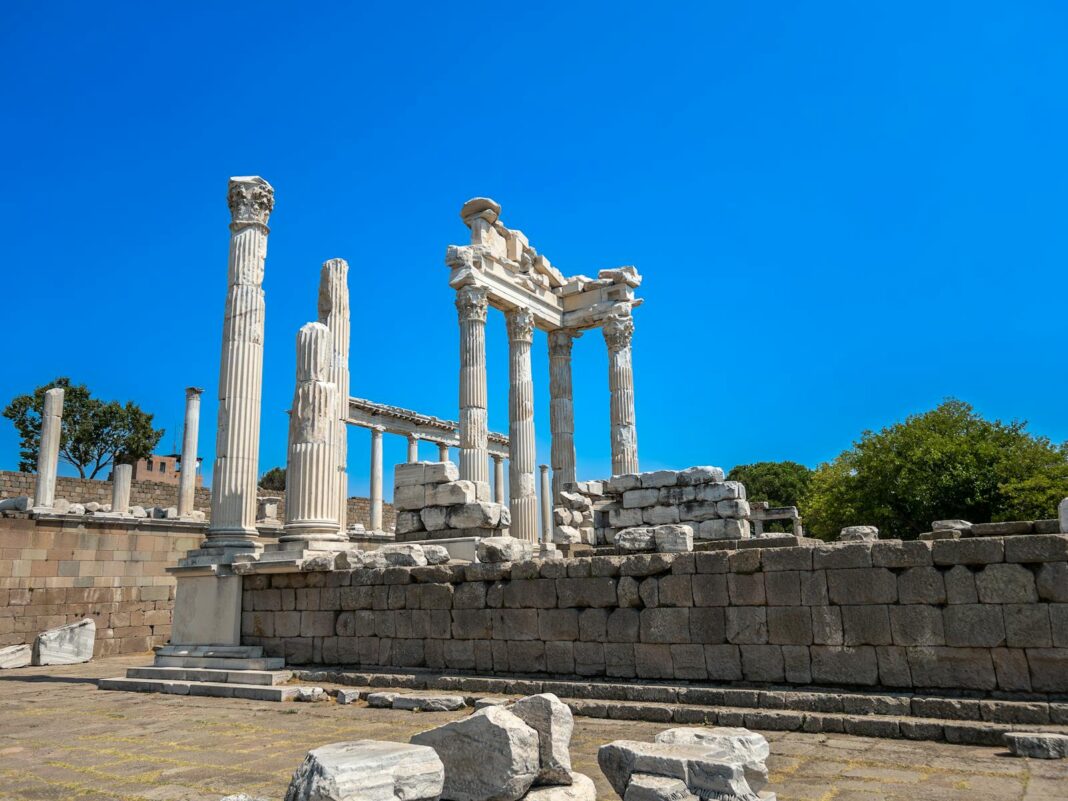Introduction
Ancient Artz has always been a reflection of human society, culture, and beliefs. Since the dawn of civilization, humans have used art as a means of communication, storytelling, and self-expression. The study of ancient art—referred to here as “Ancient Artz“—offers valuable insights into the lives, beliefs, and worldviews of our ancestors. From cave paintings and sculptures to pottery and monumental architecture, ancient art provides a window into early human creativity and innovation.
In this article, we will explore the significance of ancient art across different cultures and regions, the materials and techniques used, and how these early expressions continue to influence modern art.
What is Ancient Art?
Ancient Artz encompasses the visual arts produced by the earliest known civilizations, including Mesopotamia, Egypt, Greece, Rome, China, and the Americas. These works span a vast time period, from prehistoric cave paintings to the sophisticated sculptures of the Roman Empire.
The purpose of ancient art was often tied to religious, political, or social functions. Unlike modern art, which can be more abstract and focused on individual expression, ancient art typically had a communal or ceremonial purpose. It served to honor the gods, depict historical events, or celebrate rulers.
Key Characteristics of Ancient Art
- Use of symbolism and religious themes
- Emphasis on realism and proportion, especially in later periods
- Depiction of mythological figures, gods, and rulers
- The use of durable materials like stone, clay, and metals
The Origins of Art: Prehistoric Art
One of the earliest forms of art is prehistoric art, dating back to the Upper Paleolithic era, around 40,000 years ago. Prehistoric art refers to art produced by humans before the development of writing systems.
Cave Paintings
Cave paintings are perhaps the most iconic form of prehistoric art. These early works, found in caves such as Lascaux in France and Altamira in Spain, typically depict animals such as horses, bison, and deer. These paintings were likely created for ritualistic or spiritual purposes, possibly to ensure successful hunts.
The artists used natural pigments like charcoal, ochre, and hematite to create vivid and expressive images. Although simplistic, the attention to detail in the depiction of animal movements shows an understanding of form and anatomy.
Stone Carvings and Venus Figurines
In addition to paintings, prehistoric humans created small carvings and figurines. One famous example is the Venus of Willendorf, a small limestone figure found in Austria. This figurine, believed to represent fertility, demonstrates the importance of women and childbirth in prehistoric societies. Other prehistoric sculptures often depict animals or human-animal hybrids, suggesting a deep connection between early humans and nature.
Ancient Artz of Mesopotamia: The Cradle of Civilization
Mesopotamia, often referred to as the “Cradle of Civilization,” is home to some of the earliest examples of ancient art. Located between the Tigris and Euphrates rivers, modern-day Iraq was home to powerful civilizations such as the Sumerians, Akkadians, Babylonians, and Assyrians.
Ziggurats and Monumental Architecture
One of the most notable artistic achievements of ancient Mesopotamia is the ziggurat, a massive stepped structure that served as a temple dedicated to the gods. The Ziggurat of Ur is a prime example, constructed around 2100 BCE. These structures, made from mud-brick, were not just architectural marvels but also symbols of religious devotion.
Cylinder Seals
Mesopotamians also developed unique art forms such as cylinder seals—small carved stones that were rolled onto wet clay to leave an imprint. These seals often featured intricate designs and were used to mark ownership or as signatures. Their detailed craftsmanship shows the importance of art in everyday administrative and commercial activities.
Bas-Reliefs and Sculptures
Relief sculpture was another prominent art form in Mesopotamia. The Assyrians, in particular, were known for their large stone reliefs, which adorned the walls of palaces and depicted scenes of war, hunting, and religious ceremonies. These detailed carvings served to glorify the king and emphasize his divine connection to the gods.
Ancient Egyptian Art: Art of Immortality
Egyptian art is perhaps one of the most recognizable and influential in the ancient world. With its distinctive style and focus on the afterlife, ancient Egyptian art served both religious and funerary purposes.
Pyramids and Tomb Art
The pyramids are Egypt’s most famous artistic and architectural achievement. These massive structures, built as tombs for pharaohs, are adorned with intricate hieroglyphs and reliefs depicting the journey to the afterlife. Inside tombs, walls were often covered with frescoes that illustrated scenes of daily life, rituals, and offerings to the gods. These paintings were meant to ensure a safe passage for the deceased into the afterlife.
Sculptures and Statues
Ancient Egyptians were also skilled in sculpture. The Great Sphinx of Giza, a limestone statue with the body of a lion and the head of a pharaoh, is a testament to the Egyptians’ mastery of large-scale stone carving. Smaller statues of gods, goddesses, and kings were also common, often made from stone or metal. These statues were placed in temples and tombs as a means of connecting the mortal world with the divine.
Funerary Art: Sarcophagi and Canopic Jars
Egyptians also created elaborate funerary art, such as painted sarcophagi and canopic jars used to store the organs of the deceased. These items were often intricately decorated with religious symbols, hieroglyphs, and images of the gods, highlighting the Egyptians’ belief in the afterlife and the importance of preparing the dead for eternity.
Ancient Greek Art: The Birth of Realism
Ancient Greece was a period of great cultural and artistic achievement. Greek art evolved through different periods, including the Archaic, Classical, and Hellenistic eras, each with its own distinctive style.
Pottery and Vase Painting
Greek pottery is renowned for its beauty and function. The scenes painted on these vases depicted everything from mythology to everyday life. Black-figure pottery was an early style where figures were painted in black against the natural red of the clay, while later styles, such as red-figure pottery, allowed for more detail and fluidity in the depiction of human forms.
Sculpture: From the Ideal to the Real
Greek sculpture is one of the greatest legacies of ancient art. Early Greek sculptures were more rigid and stylized, as seen in the kouros figures—idealized young male figures with stiff postures. However, by the Classical period, sculptors like Phidias and Polykleitos had perfected the depiction of the human body, focusing on realism, movement, and anatomical accuracy.
Architectural Masterpieces: Temples and The Parthenon
Greek architecture, particularly temples, reflects the Greeks’ reverence for harmony and proportion. The Parthenon, dedicated to the goddess Athena, is perhaps the most famous example of Greek architecture. Its elegant columns, friezes, and sculptures demonstrate the Greeks’ mastery of form and function, creating spaces that were both aesthetically pleasing and structurally sound.
Ancient Roman Art: Power and Propaganda
Roman art, heavily influenced by Greek and Etruscan traditions, played a crucial role in Roman society.
Roman Architecture: The Arch and Aqueducts
Romans made significant advances in architecture, particularly through the use of the arch and concrete. This allowed them to construct massive buildings like the Colosseum and intricate systems of aqueducts. Roman architecture combined beauty with engineering prowess, with a focus on functionality and grandeur.
Mosaics and Frescoes
Roman art also included intricate mosaics and frescoes. Mosaics, made from small pieces of colored stone or glass, decorated floors and walls, depicting scenes from mythology, history, or daily life. Roman frescoes, especially those found in Pompeii, offer a glimpse into the domestic life of wealthy Romans, with detailed images of gardens, feasts, and rituals.
Ancient Art of Asia: Spirituality and Symbolism
Ancient Asian art, particularly from China and India, emphasizes spirituality and symbolism. Unlike Western art, which often focused on realism, Asian art often prioritized abstract forms and symbolic representations.
Chinese Ceramics and Calligraphy
Chinese art is renowned for its ceramics, particularly the development of porcelain. Early Chinese pottery, such as the terracotta army, demonstrates the precision and artistry of ancient Chinese artisans. Calligraphy, considered one of the highest forms of art in China, emphasizes the beauty of written characters, with each stroke representing a perfect blend of art and meaning.
Indian Sculpture and Architecture
Indian art, deeply intertwined with religious beliefs, produced some of the most intricate sculptures and architectural marvels. The temples of Khajuraho and the Buddhist stupas of Sanchi reflect India’s spiritual traditions and the importance of sacred spaces.
Conclusion: The Enduring Legacy of Ancient Artz
Ancient artz, created thousands of years ago, continues to inspire and influence contemporary artists and scholars alike. From the intricate carvings of Mesopotamia to the stunning realism of Greek sculpture, these early expressions of human creativity have left an indelible mark on history. Ancient art not only reflects the cultures and societies that produced it but also offers timeless lessons in beauty, craftsmanship, and innovation. Whether in the monumental architecture of Egypt or the delicate pottery of Greece, the legacy of ancient art continues to shape the modern world.













